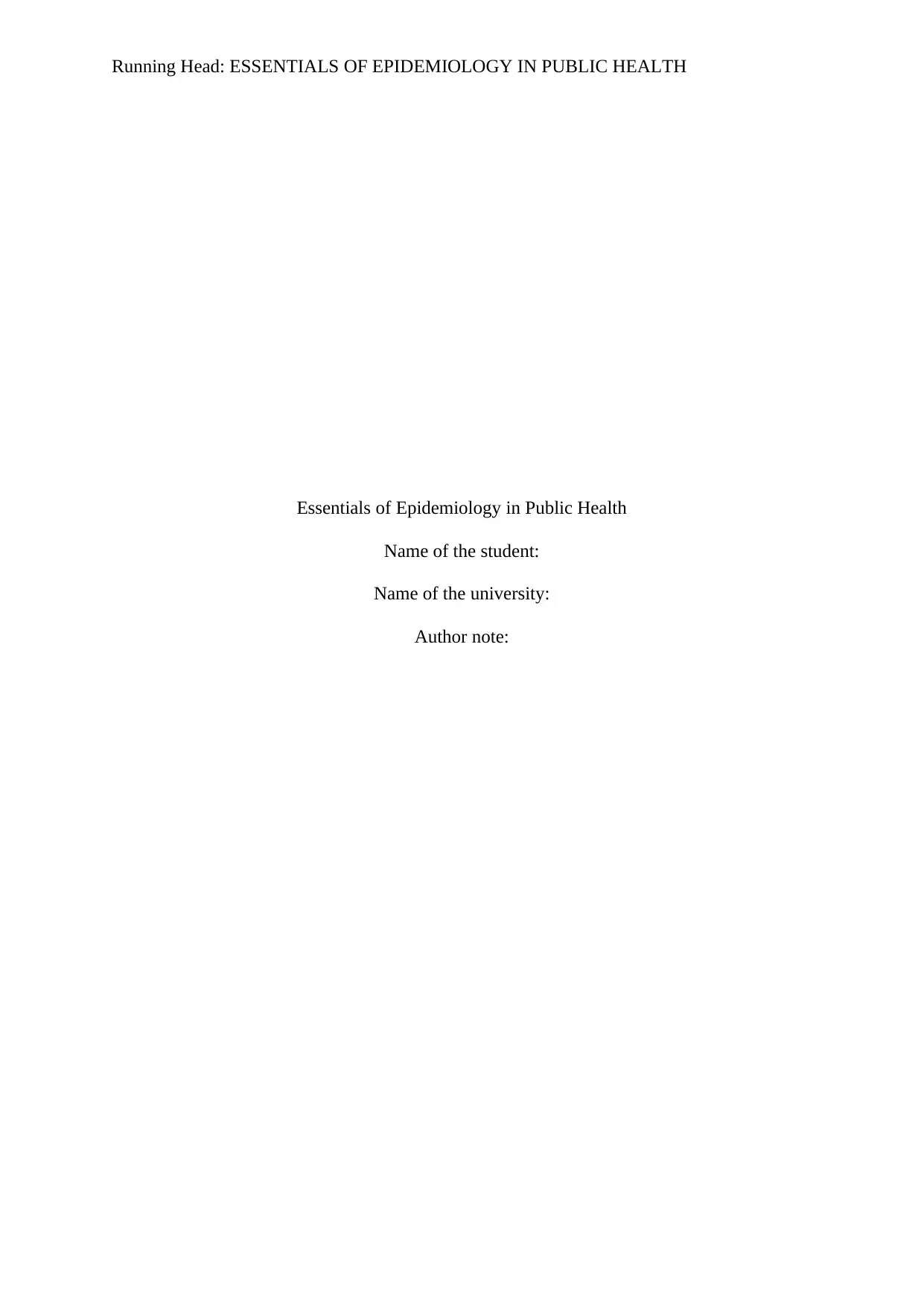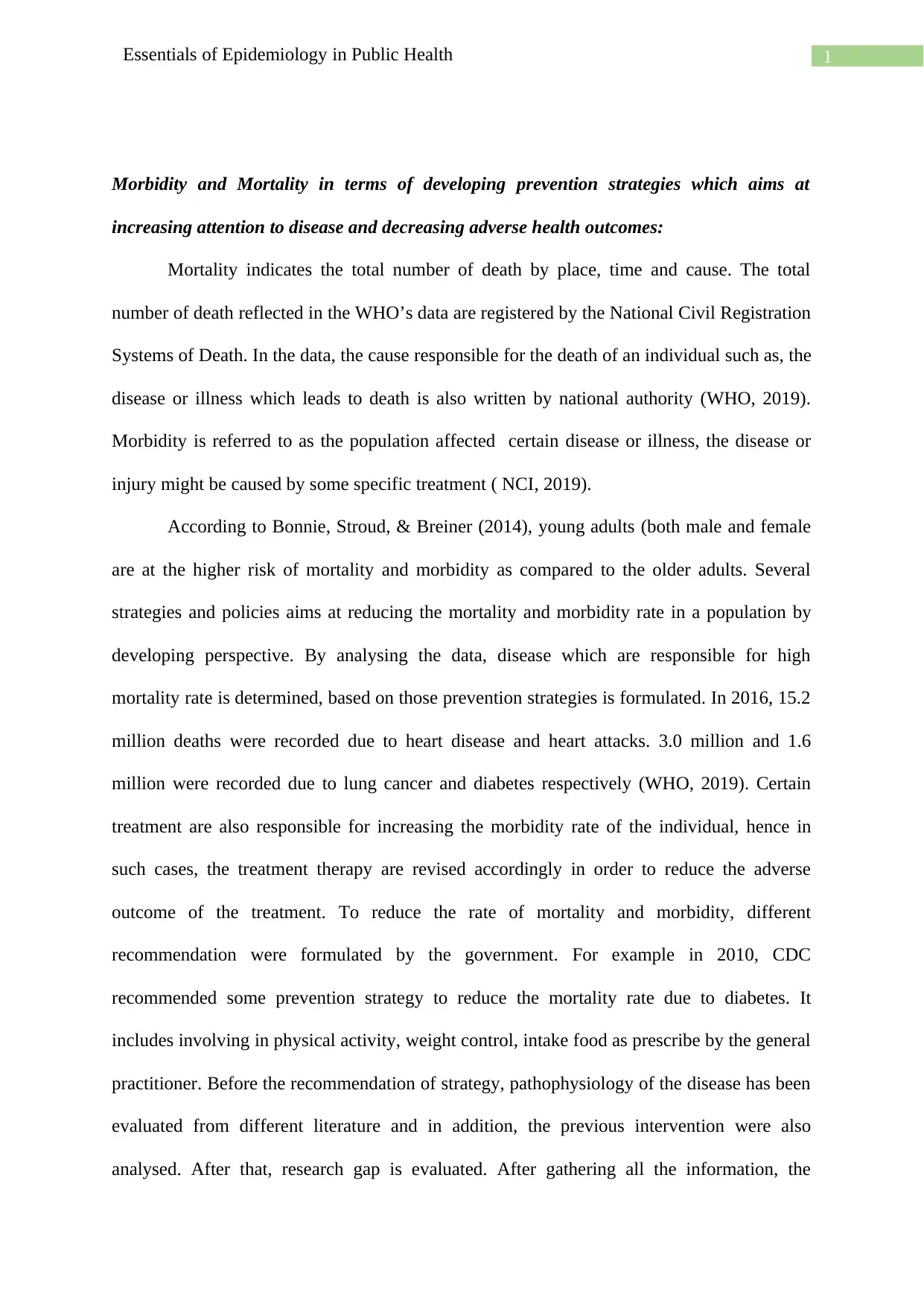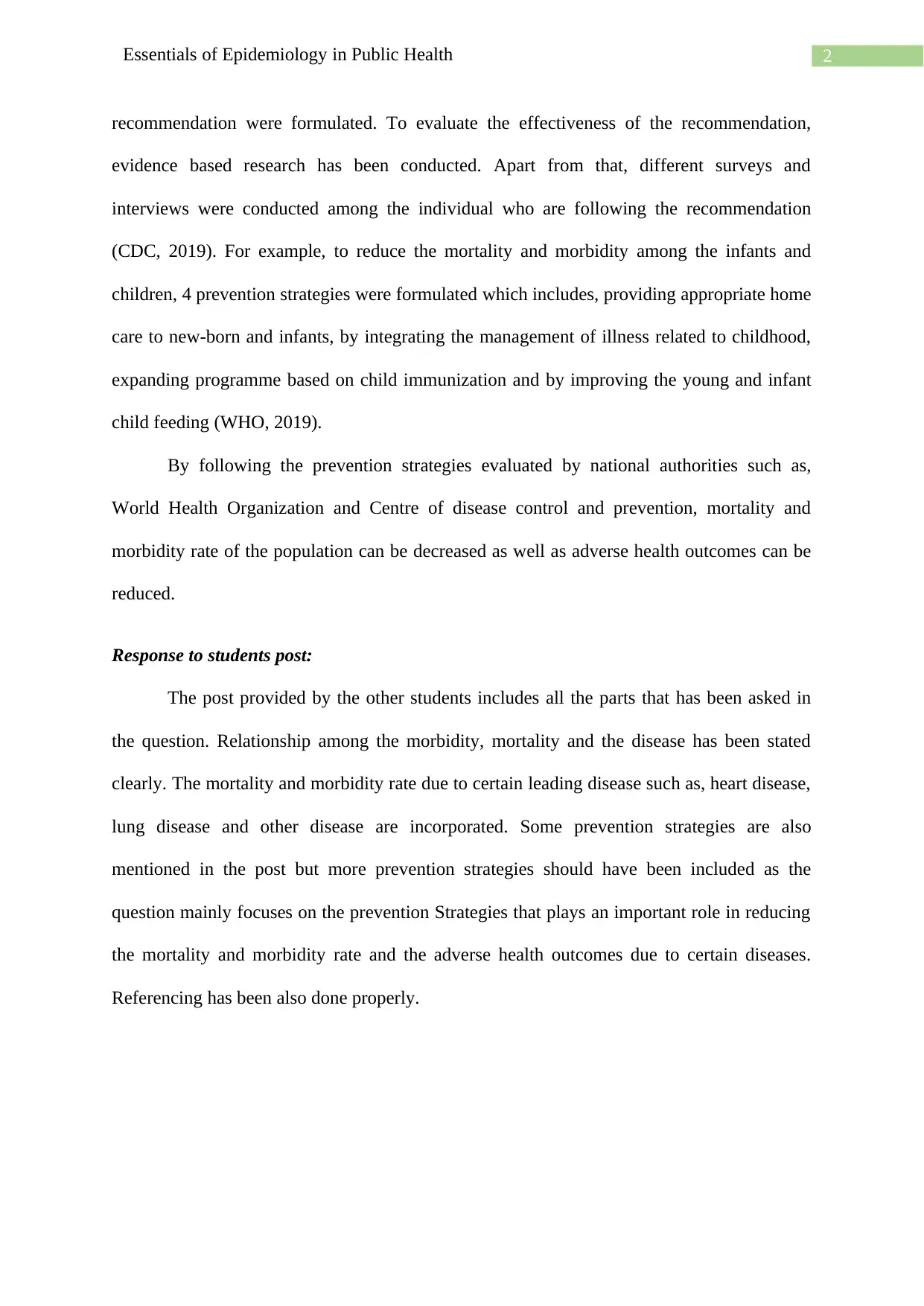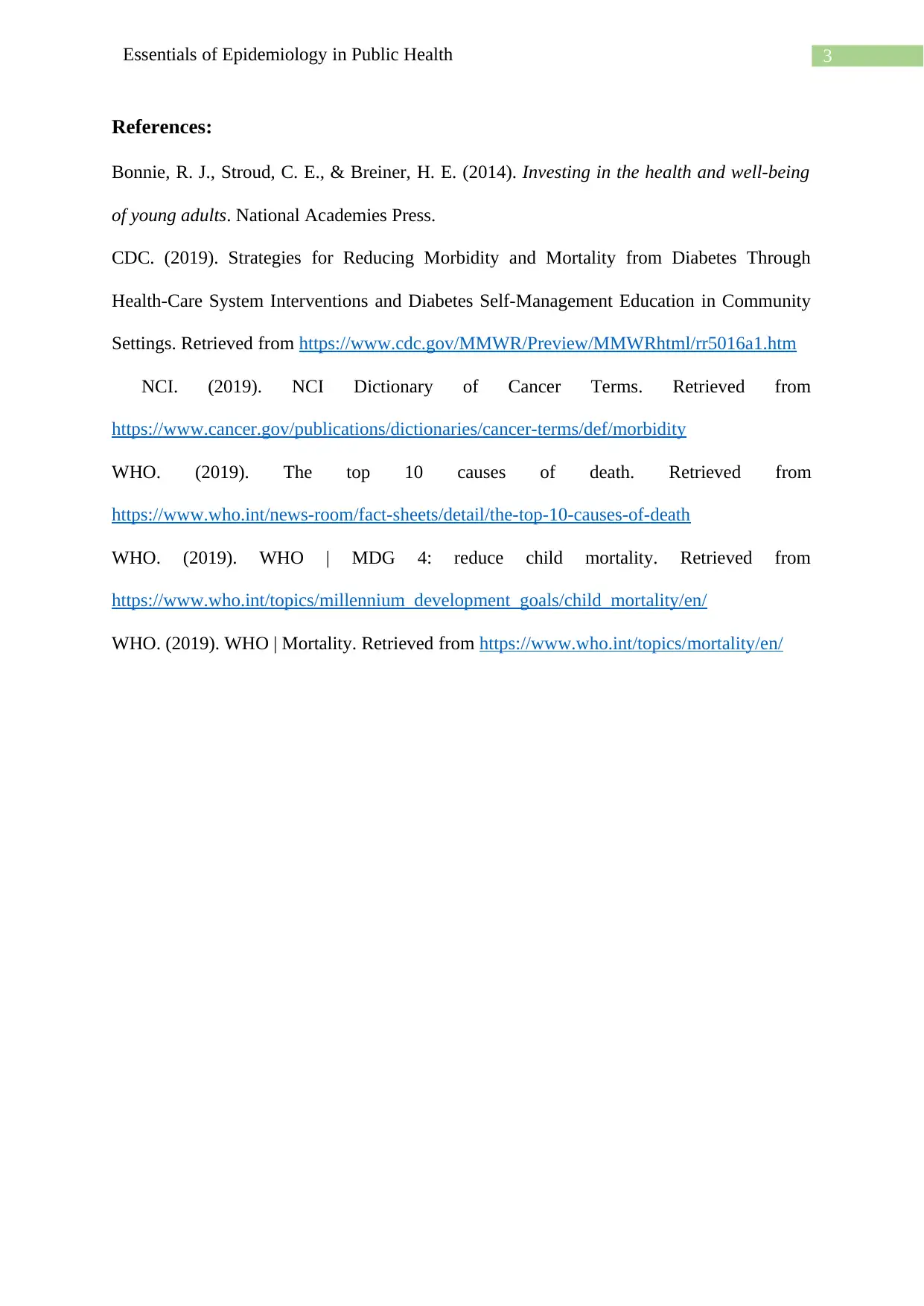Essentials of Epidemiology in Public Health: A Detailed Report
VerifiedAdded on 2022/11/16
|4
|816
|57
Report
AI Summary
This report, titled "Essentials of Epidemiology in Public Health," delves into the core concepts of epidemiology, focusing on mortality and morbidity rates and the development of prevention strategies to improve health outcomes. The report analyzes mortality data from the WHO, highlighting leading causes of death such as heart disease, lung cancer, and diabetes, and the influence of treatment on morbidity rates. It emphasizes the importance of strategies formulated by organizations like the CDC and WHO, including recommendations for physical activity, weight control, and childhood immunization. The report also includes a response to a student's post, acknowledging the importance of the relationship between morbidity, mortality, and disease, while suggesting more detailed prevention strategies. It concludes with a comprehensive list of references, including sources from the WHO, CDC, and National Academies Press.
1 out of 4










![[object Object]](/_next/static/media/star-bottom.7253800d.svg)